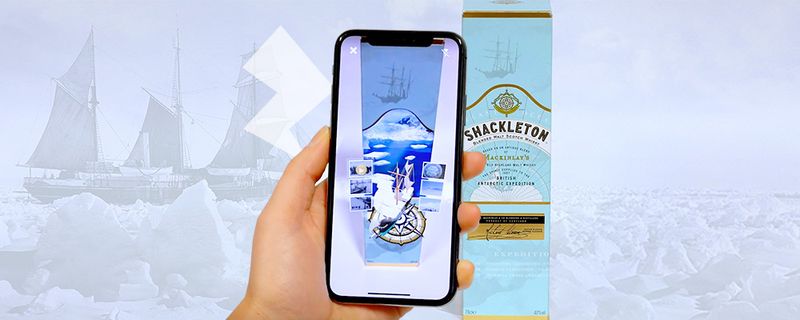Packaging Innovations is a fantastic event, bringing businesses together to explore the future of packaging through the lens of innovation, design and sustainability. AR and the possibilities of connected packaging are a core part of that mix, and I’m really excited to be making my way there this week and speaking as part of an expert panel on the power of AR to transform the way we conceive of packaging.
If you’re going to be there, be sure to say hello - it would be great to chat. But if you’re unfortunately not able to make it, here’s five important things to expect from my panel.
Unfulfilled potential of product packaging
This is certainly a topic we’ve explored in more detail before, but the basis of AR’s impact on packaging really cannot be overstated. Packaging today exists predominantly in a passive state - designed to shout from the shelves pre-purchase, but is so often simply destined for the bin not long after. Considering the level of time and expense afforded to it, packaging could and should be working far harder for your business.
The power of AR is that it re-conceptualises packaging. It takes the items we see around us every single day and combines it with the device your audience is very likely to be clutching at the same time - their smartphone. This in turn unlocks a new, wholly-owned, digital communication channel that is overflowing with possibilities for you to begin a direct conversation with your audience.
Our work with Bombay Sapphire highlights how AR can elevate and enhance iconic product packaging
Our work with gin brand Bombay Sapphire is emblematic of this, showcasing how AR can enhance packaging in a way that delivers genuine post-purchase value and increased engagement with the brand. Through a quick scan, customers’ phone cameras become a portal to digital content, delivering cocktail recipes and instructional videos, which inspire the user to explore the product’s diverse range of uses in a fun and interactive way. The way this process can be adapted is really as open as the brand’s imagination.
This is particularly important when dealing with bottles of spirits. Often identifiable by their outline alone, the packaging is iconic to the extent of almost transcending being disposable - where (when enjoyed responsibly!) it can live as ‘furniture’ in the home for a long period of time. AR compliments carefully crafted packaging - adding digital layers of content for customers to enjoy in context, rather than transporting them away.
2) Re-imagine packaging to drive sales and build loyalty
One of the great things about connected packaging is that the diversity of experiences on offer can be tailored to directly fulfil your brand’s specific marketing or sales goals in innovative, interactive ways.
A favourite example is our work with PEZ Europe, with their inimitable dispensers featuring the colourful cast of Rovio’s Angry Birds. A key goal was to drive sales of separate refill packs, encouraging consumers to continue enjoying their product after the initial dispenser purchase and utilise AR to transform their product packaging into a channel that inspired brand loyalty and added value.
PEZ utilised AR to build customer loyalty and drive sales of refill packs
Traditional solutions to this are often not a good fit - for example, additional plastic bonuses can be less environmentally sustainable, cumbersome and costly. In this case, our team created a bespoke scanning app named ‘PEZ Play’, making refill packs an exclusive and rewarding entry point to a world of exciting mini-games and shareable digital content. These games were specifically designed to reward customers for multiple interactions - repeat scans and purchases of different refill packs unlocked collectible content, creating virtual ‘unboxing’ moments. Meanwhile, the implementation of high score tables meant repeated plays with friends had a tangible competitive reward.
These experiences were scanned over 800,000 times from 250,000 app downloads, with users spending an average of three minutes within the app - significantly increasing the lifetime value of the customer.
3) Telling your brand story and making it stick
AR at its heart is all about accessing a brand new era of storytelling - adding a layer of interactive content to the world around us that has the capacity to engage users and capture their imagination. Business is beginning to unlock this potential and product packaging represents an untapped owned media channel.
With the rise of e-commerce, real estate for building relationships between brands and consumers is at a premium, just when brand provenance, values and heritage are being more highly valued in purchase decisions, particularly by millennials.
Sustainability is a huge part of this and its presence as a centrepiece discussion at Packaging Innovations this year speaks to how hot a topic it is within the industry. AR connected packaging is a really great way to enhance awareness of this, enabling consumers to learn about the provenance of the packaging materials used, educate people on ways to recycle them and communicate brand values, all while extending the product lifespan.
AR agency FlyAR exemplified this approach in collaboration with Stora Enso in Finland. They utilised AR to create an interactive, beautifully animated journey through the product’s production and sourcing of sustainable materials - take a look at what they achieved.
Stora Enso, a world leader in renewable packaging materials, leveraged AR to tell their sustainability story
Similar ideas are at work when using AR to celebrate brand provenance. Collaborating with Shackleton was a fantastic example of AR’s ability to connect customers with a brand’s heritage in a compellingly interactive way.
We created a 3D interactive experience which was accessible by scanning limited-edition Shackleton packaging via the Shazam app, unlocking a stunning nautical journey that dives deep into the iconic whisky brand's heritage and spirit of exploration.
In this context, AR not only provides a new digital arena for communicating this messaging through animation, video and mini-games, but its interactivity makes it more likely to stick. Our collaborative ‘Layered’ report with the experts at Mindshare and Neuro-Insight demonstrated that users interacting with AR experiences not only had higher levels of attention than via traditional mediums, but also had 70% higher memory encoding.
In short, AR experiences are a highly effective way to capture consumer attention and as AR is focused upon ‘learning through doing’ rather than passively viewing content, that messaging is more likely to be retained.
Of course, implementing AR alone does not ensure these kind of results - that’s why it’s important to talk about how to create a successful, attractive and user-friendly AR experience.
4) Delivering an effective connected packaging campaign with the Three C’s
So having established the unfulfilled potential of connected packaging, how do we make these experiences truly valuable? As you can imagine, as people who work with the technology everyday, we’re all very enthusiastic about AR! But it’s absolutely crucial to remember that technology alone cannot grab the attention of consumers.
Our ‘Three C’s’ approach zeros in on what your business needs to know on when it comes to making a connected packaging campaign great - Context, CTA, Content. We’ve explored this in further detail previously, but here’s a quick overview
Context
Put yourself in the shoes of your audience - where and how are they going to be accessing your experience? Are they going to be interacting with your brand’s product packaging in a setting with decent WiFi connectivity, with the appropriate light and available dwell time you’re seeking? AR in itself cannot make someone interested and engaged - the experience you’re offering has to be intrinsic to the physical object, location or marketing collateral they’re looking at.
CTA
This is all about having a clear Call To Action. AR is making big strides towards normalization but this is still pretty new technology for many consumers. You’ve got to be really clear about how someone is going to access your experience - do they need to download the Zappar app first, or is it embedded into your own branded app? Have you pointed out where the user needs to point their camera? And potentially even more important, does your audience have a compelling reason to scan? If you’re offering a really cool AR experience then it’s important to be proud of it - let your audience know what benefits they’ll derive from scanning and let them know their time will be valued.
Carlton Dry's irreverent 'Underthink It' connected packaging campaign is a fantastic example of clear, compelling call to action
Content
Now it may sound obvious but you’ve got to deliver content that your audience will really care about. And that’s not just an issue of competent development, it’s about maximizing the qualities that make AR special. For example, could your experience be delivered just as easily on YouTube or via a webpage? Does it reward users for getting involved and make their lives easier? Mini-games, shareable face filters and animated content that enhance packaging are all valuable ways to incentivize customers for scanning - offering something they can’t experience elsewhere.
5) Getting to know you - AR, data and audience behaviour
A particularly exciting element of connected packaging is the level of insight that can be gained into customer behaviour post-purchase and how it can be leveraged for collecting audience data in a way that’s GDPR compliant.
Our work with Fanta is an exciting example of this. We integrated AR face filters into a wider influencer-focused campaign, creating a feedback loop where users were encouraged to share content directly to their social media channels, which organically increased awareness of the marketing campaign and directed peers towards purchase.
The AR experience provided a content-rich pathway towards entering a Fanta competition, building a level of comfort for users for sharing data directly through their own device through interacting with a trusted physical product with the brand noticing significantly higher data capture than via their traditional digital outreach.
Fanta integrated AR into a wider influencer-focused digital campaign, with fantastic results
With our in-built Zapalytics functionality, the times, scans and dwell time of user interactions with AR experiences can be easily tracked - so brands are able to not only keep an eye on the performance of their campaign, but also gauge the effectiveness of the call to action from other platforms and bring those learnings into future campaigns.
Final Thoughts
The increasing normalization and technological improvements of AR is coming at an exciting time for product packaging, as it looks to evolve to the challenges of e-commerce, sustainability and changing customer trends. Packaging Innovations is an ideal place for an exploration of these topics, and I’m really excited to be taking part - learning from major players in the sector and contributing insight on how AR can play an incredibly important role in the future of packaging. If you’re unable to attend but would like to hear more about how AR can transform product packaging, take a look at our wide range of work with some of the world’s biggest brands. I’d love to hear from you to discuss how we can help your brand harness the power of connected packaging, so do feel free to get in touch for a chat.
 Martin Stahel
Martin StahelSales Director, Zappar

